What is the Ergosa’s Horizontal Mode and What Production is it Best Suited For?
👉 You’re thinking of purchasing an Ergosa packer to maximize your folder-gluer’s productivity, but you want to be 100% certain that you’re making...
9 min read
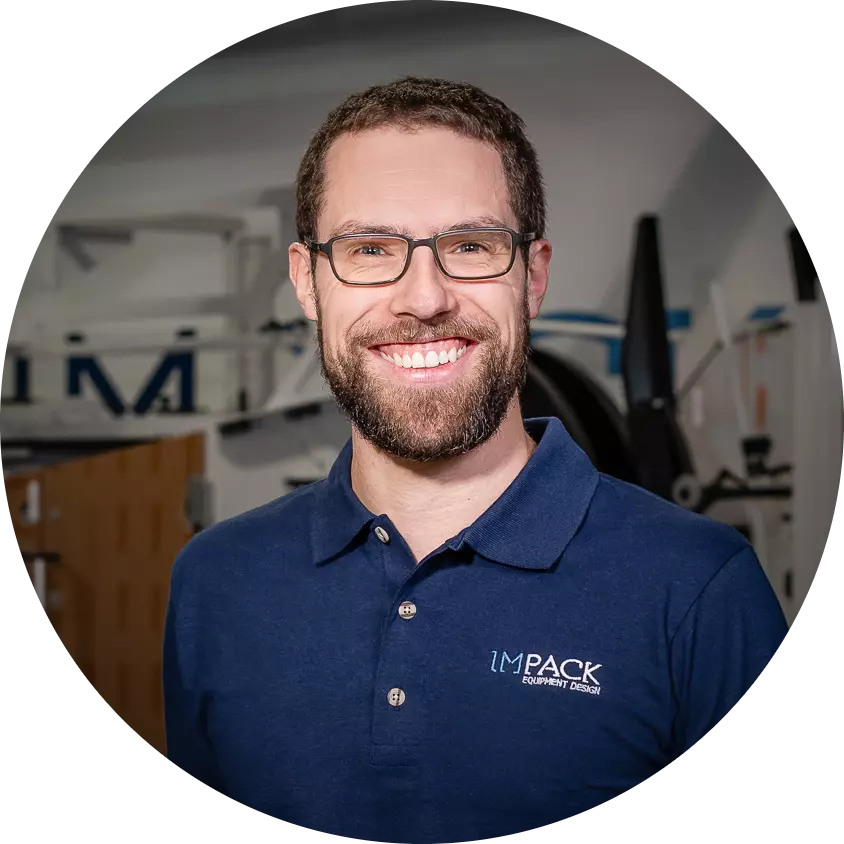 Stefan Badertscher
:
June 22, 2021
Stefan Badertscher
:
June 22, 2021

You’re considering the purchase of an Ergosa packer to maximize your folder-gluer’s productivity and reach higher packing speeds.
But, you’ve got questions. Lots of questions:
“What is the Ergosa’s case management system?”
“And how does it work?”
“Will it really have a big impact on my packing process?!”
I get it.
Let's be honest 👉: We all want to make sure that we’re getting the best return on our investment, especially when it involves investing from our company’s hard-earned money.
And doing as much research as possible about your new folder-gluer packer is fundamental to ensuring that you get the greatest payback possible and achieve your most aggressive goals.
This article will break down the Ergosa’s case management system: What it is, how it works, and the advantages it can offer to your packing process.
Plus, I’ll provide you with the answers to our top frequently asked questions about the Ergosa’s case management. This way you’re fully equipped with all the information you need to make a more educated decision on your purchase.
Let’s dive in, shall we?
**If you already know what an Ergosa packer is and how it offers a semi-automated packing process, skip to the section “What is the Ergosa’s Case Management System?”
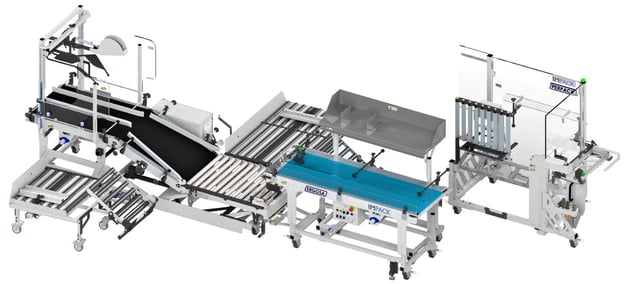
The Ergosa is IMPACK’s Semi-Automatic folder-gluer packer that optimizes the efficiency, ergonomy, and productivity of your packing process and allows you to push your folder-gluer to its maximum potential.
🔍 Related: What is an Ergosa Packer & How Can It Improve My Packing Process?
A packing process becomes semi-automated once the folder-gluer packer includes at least one automated functionality.
This means that the operator of a semi-automatic packer remains the key factor of the packing process, but with the help of at least one automatic feature.
For example, with IMPACK’s Ergosa packer, this auto feature is the case management system.
That is, the Ergosa is semi-automatic because it includes an automated case management process.
🔍 Related: What’s the Difference between Manual, Semi-Auto, Auto and Fully-Auto Folder-Gluer Packers?
A folder-gluer packer is one of the 4 main folder-gluer packaging equipment and peripheral solutions that can be installed at the end of a folding-gluing line.
A packer uses a modernized packing methodology that allows you to automate your end of line process. It dramatically improves the efficiency, ergonomy, and productivity of your case packing process by offering you automated case management capabilities.
🔎 Related: What is a Folder-Gluer Packer and Do You Really Need One?
We mentioned the Ergosa's “automated case management” several times.
But, what is the Ergosa’s “automated case management?”
The Ergosa’s case management system is the automatic feature of the Ergosa that makes the Ergosa a semi-automatic packer offering a semi-automated packing process.
The case management system is a combination of components with a programmed sequence in the Ergosa’s programmable logic controller that automatically handles all cases and automates everything that happens after the case packing process.
In other words, the Ergosa’s case management system manages your cases fully automatically after they have been packed with the boxes.
Having your cases managed automatically means that your packing person(s) can focus on the packing and no longer has to perform the case flap closing, ejecting, or taping manually as those actions are now fully automated by the Ergosa.
The Ergosa’s case management system consists of everything from the case holding system (point A) to the case sealer machine (point B) 95% of the time.
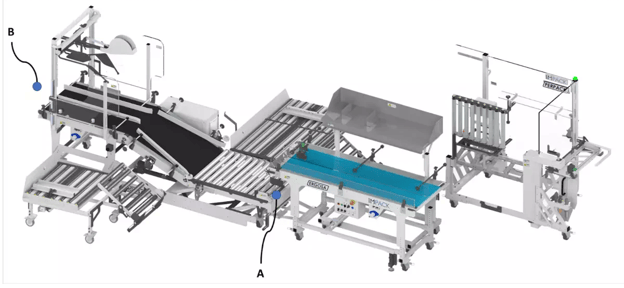
The Ergosa’s case management system includes 3 main components 👇:
The Case Holding System.
The Case Conveyor.
The Case Flap Aid (Optional).
The case holding system is the component responsible for holding empty cases while packing rows into cases. The lateral clamping system of the case holder prevents the case from moving when sliding a complete row of boxes into the case.
The image below shows the Ergosa’s Case Holding System:
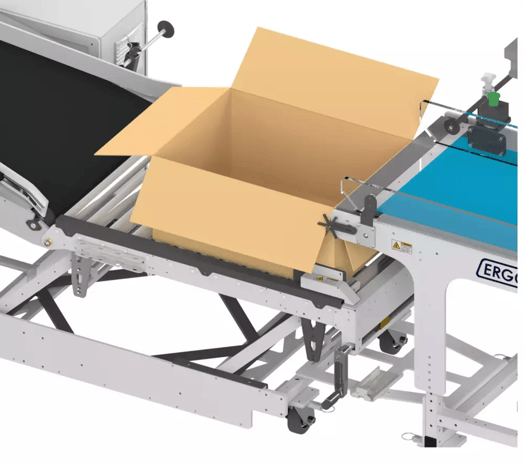
The case holder consists of a roller conveyor and a case maintaining system. It can be adjusted to your respective cases in 2 dimensions: Width and height.
For the width, the case holder includes one fixed jaw and an adjustable one to hold the case in place using soft pads and a small pneumatic cylinder with adjustable pressure.
For the height, the roller conveyor is part of the primary case conveyor and can be adjusted to the best ergonomic position for your packing person(s).
The height adjustment is electrically assisted on the Ergosa C packer. On the Ergosa A packer, it is manual with the assistance of a gas spring cylinder. The purpose of the height adjustment is to have the top of the case aligned with the accumulation conveyor’s height so that you can easily slide your boxes into the case.
No matter what the case height is, the top of the case will always match the accumulation conveyor.
It is noteworthy to mention that different versions of the Ergosa packer offer different positions for case holding.
For example, our Ergosa C packer offers 3 main packing modes and each of those packing modes offers several case holding positions to meet your customer’s requested case packing configuration.

The case conveyor is the component responsible for transferring the filled case at the right height to the next step of the process whether it be case sealing, storage, or palletizing.
The case conveyor is the black belt shown in the image below and consists of two sections:
The primary section.
and the secondary section.
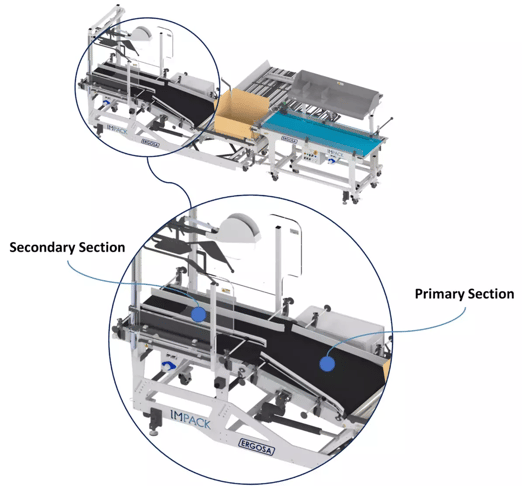
The primary section is the first portion of the case conveyor (first half of the black belt) and is angled to match the case holding station and the secondary section.
The secondary section is the second portion of the case conveyor (second half of the black belt) and is perfectly straight to match the height of your case sealer machine.
An optional “Bump and Turn” device can be installed on the primary case conveyor (the first half of the black belt) to rotate your filled cases 90° before transferring them to the secondary section of the case conveyor.
This optional device is added in rare instances where the case's packing direction is not the same as the direction in which the case should go into the case sealer machine.
In those specific situations, the “Bump and Turn” device is used to adjust the orientation of the case so that it enters the case sealer with the appropriate orientation.
The case conveyor is offered in both straight and 90° configuration (i.e. angled) to suit your floor space.
The 90° configuration is very common with our Ergosa A packer but is also offered as an option with the Ergosa C packer. In addition, our Ergosa A packer is available without a case conveyor.
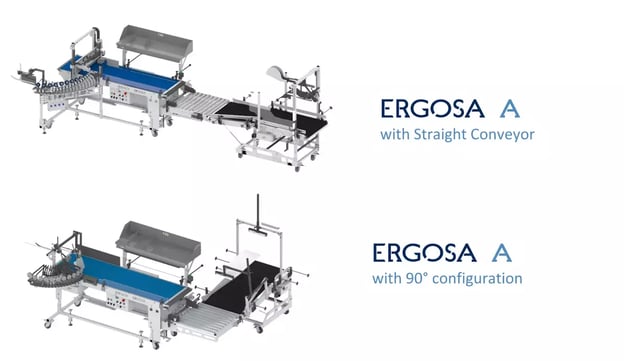
The case flap aid is an optional component that can be integrated onto your case conveyor if your existing case sealer machine does not have automatic flap folding.
There are two case flap aid options that we offer:
The 4 Flap Folder device (4FF).
and the 4 Flap Holder device (4FH).
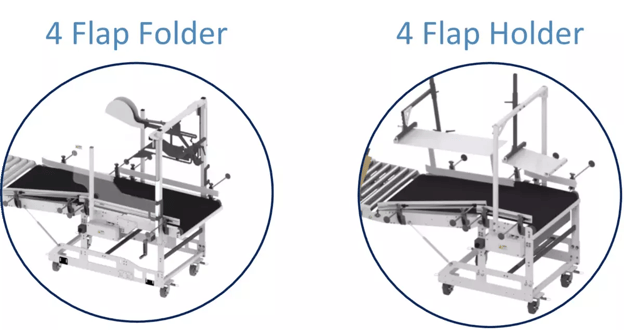
The 4 Flap Holder (4FH) will hold the flaps of the case after your packing person has folded the flaps so that the case can pass seamlessly through the case sealer and get sealed.
The 4 Flap Folder (4FF) will automatically fold the flaps of the case, and in the right sequence, prior to the case being sealed by the case sealer. That is, with the 4FF, your packing person no longer needs to fold the flaps as this action is now fully automated (in most situations).
You do not have a case sealer as you would not need to fold your case flaps.
You are taping your cases manually as the person who’s taping will fold the flaps anyways.
Your existing case sealer already offers flap folding aids.
Regardless of what version of the Ergosa packer you choose (Ergosa A or Ergosa C) or the packing mode you use, the case management system will allow your operator to:
Place the empty cases at an ergonomic height for your packing person(s).
Hold the case always in place while packing rows into cases.
Eject the filled case fully automatically, and at the right moment, in the cycle time.
Transfer the filled case fully automatically, and at the right height, to the next step in the packing process.
Thus, the Ergosa’s case management system automates everything from the case holding system (point A) to the case sealer machine (point B) i.e. every step that happens after the case packing process.
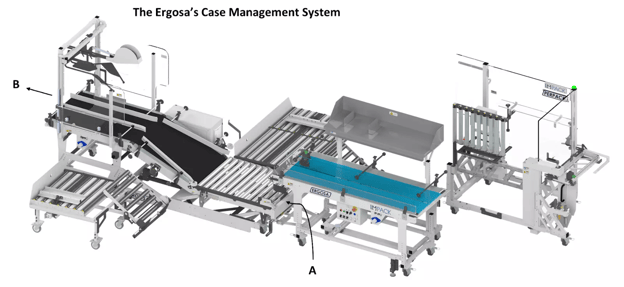
Now, let’s break down the case management process step-by-step:
After your packing person has packed the case with the boxes, they will press the green ejection button which will trigger the case holding system’s jaws to open and release the case.
The rollers of the lifting conveyor will start moving and subsequently, transfer the filled case to the case conveyor (optional: the case can be turned 90° using the “Bump and Turn” device if the case’s packing direction needs to be adjusted before entering the case sealer).
Next, the filled case will be guided into the 4 Flap Folder/4 Flap Holder (optional) and finally through your case sealer where the filled case gets fully sealed/taped.

If you are taping your filled cases manually, then you do not “need” a case sealer.
That said, integrating a case sealer as part of your Ergosa packer allows you to unleash the Ergosa’s full potential, increase the scope of your automation, and reduce your packing person(s) to a 1-person operation.
That is to say, if you want to reach a 1-person-only operation, you must have a case sealer.
A case sealer will allow you to increase your level of automation such that no humans are required between your packing station and palletizing station.
Another critical point to consider when deciding whether you should add a case sealer is the amount of time (and money) you spend on case tapers. This is a point that always takes clients by surprise.
With some easy calculations, clients quickly realize how much time and money they have been spending asking packing personnel to simply tape cases.
Instead of using a hand taper, as you would traditionally do, a case sealer machine allows you to fully automate the taping process so that your packing personnel do not have to manually tape any cases.
Simply push the case through the case sealer machine and the case will come out automatically taped/sealed.
Taking it a step further, you can even pack your cases without taping the bottom of the case.
The case sealer will tape the top and bottom of the case, at once, fully automatically.
This investment can save you approximately 3-6 seconds per case.
Here is a very straightforward example to demonstrate how much time and money you can save with a case sealer machine:
Let’s assume that your company works two 8 hour shifts per day over a 5 day work week. If you pack with a speed of only 1 case per minute, then you need 8 hours per week to just tape cases.
That is, 6 seconds per case x 60 minutes per hour x 8 hours per work shift x 2 shifts per day x 5 days per week = 28,800 seconds or 8 hours.
Think about it for a moment: Each week it takes you one 1 full working day (8 hrs.) to just tape cases.
This is 20% of a standard work schedule. With an average total labour cost of around $60,000 CAD per year on an operator/packing person, this results in $12,000 CAD spent every year on simply asking a packing person to tape your cases.
A one time purchase cost of a case sealer machine can vary from $3000-9,000 CAD. This means that the payback period of an investment in a case sealer is in most cases anywhere from 3-9 months.
In short, you do not need a case sealer. But, it is of best practice that you integrate one to your Ergosa packer if you want to take full advantage of what the Ergosa has to offer and reduce the number of packing person(s) to just 1 person.
If you already have an existing case conveyor, we cannot discount the standard Ergosa packer because our case conveyor is integrated as part of the Ergosa’s case management system.
All those sequences we described earlier are part of a programmed machine with sensors, drivers, and a programmable logic controller (PLC) that is designed to semi-automate your entire packing process.
We could add your existing case conveyor. It is certainly possible, easy, and not a complicated process.
However, it will end up being a custom project and a factor that will exponentially increase the cost of your Ergosa packer.
Yes, we can! The 4FF and 4FH devices are optional and not “must-haves” as part of your Ergosa package. We would be more than happy to offer you a discount!

Choosing the right packing system for your production is not a simple task. At IMPACK, we do not just throw a quote on you and wish you good vibes.
We guide you every step of the way.
This includes conducting a FREE productivity analysis on your existing folder-gluer(s) and finishing department’s performance, collecting and analyzing the data, assessing your production’s capabilities, and determining the best solution for your production.
If you’re satisfied with the data analysis and our proposed solution answers your company’s most pressing needs, our team will then build your new machine with your data in mind.
Plus, we will install your new machine and provide your operators with complete training every step of the way.
Ready to take the next step? 📞 Give us a call to book an appointment with an IMPACK expert and find out how you can maximize your folder-gluer’s productivity.
Not feeling ready to pull the trigger on a new packer just yet? Is it because you’ve got more questions that you want answers for? That’s totally understandable!
📲 Get in touch with us today and we’ll be happy to answer any questions you have and show you how you can become the top speed producer in your market!
UP NEXT:
What are the Ergosa Packer’s 3 Main Packing Modes? (Definition, Features & Benefits)
Ergosa A Vs. Ergosa C: Which Is Better For Your Production?
What is the Ergosa Packer's Vertical Mode and When Do You Need It?
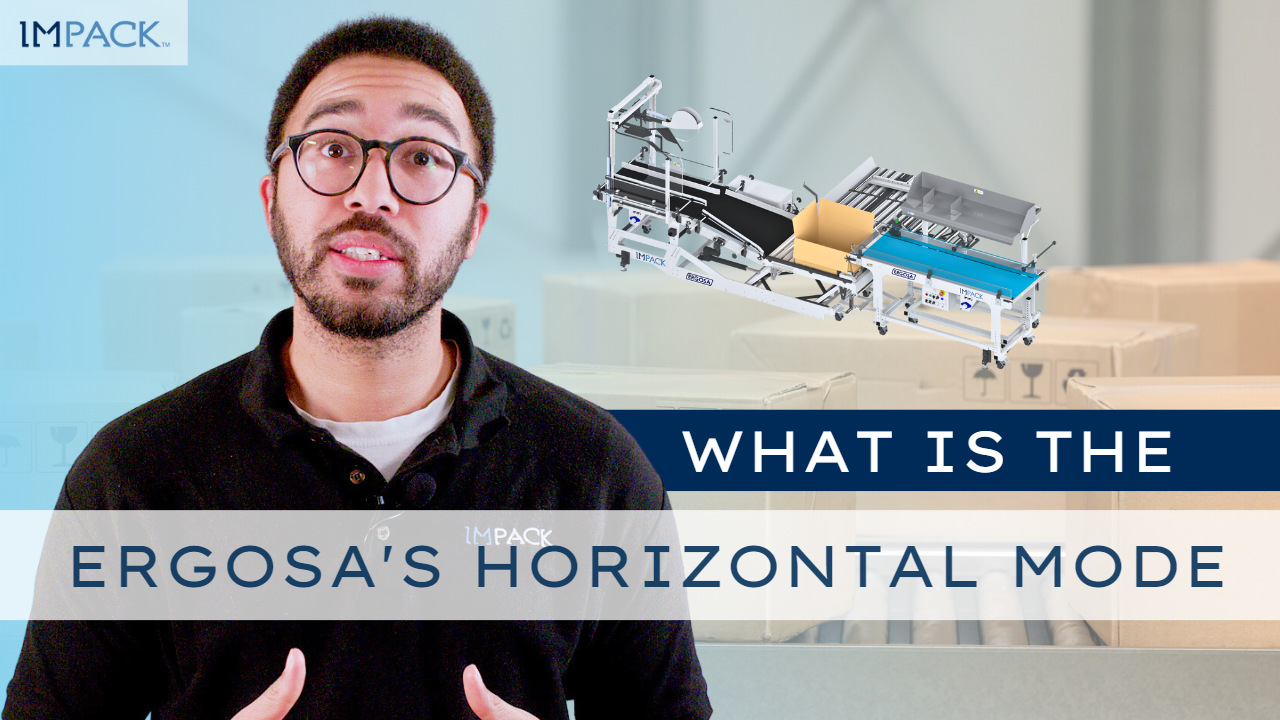
👉 You’re thinking of purchasing an Ergosa packer to maximize your folder-gluer’s productivity, but you want to be 100% certain that you’re making...
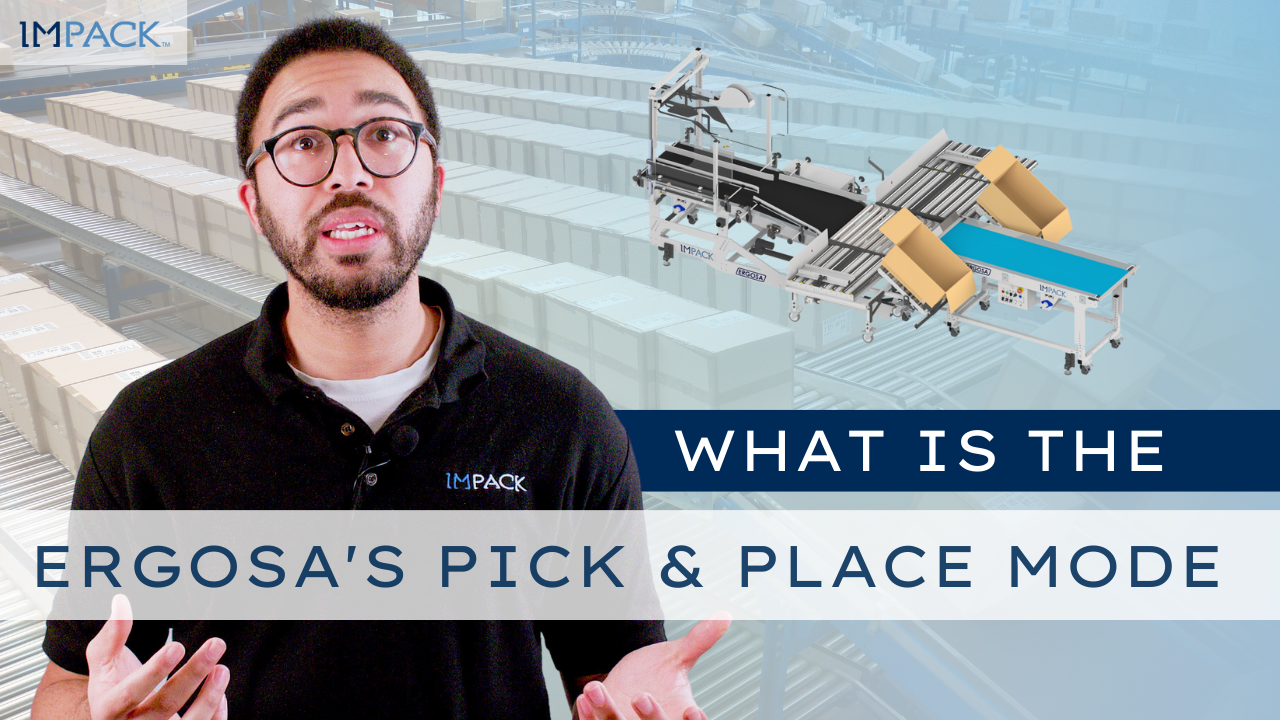
If you’re considering the purchase of an Ergosa packer, you’re probably wondering: What benefits can the Ergosa provide to my packing process?
.jpg)
You’ve ordered an IMPACK Ergosa packer.